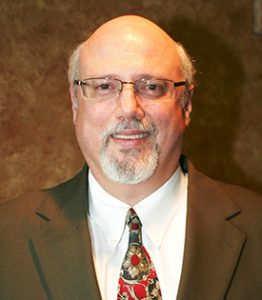Sure, we have all heard the word. Chances are we have spoken about it from time to time, and felt as though we firmly understood its meaning. Maybe we use the word in a joking context or with hyperbolic flare. Regardless, it is in our vocabulary, it is part of the public awareness now more than ever, but do we really know what we are talking about when we use the word “trauma”?
In all of my years as a practicing clinician, working largely with traumatized individuals, I have learned one thing for certain. Trauma is not straightforward. You cannot always see it coming and often are unaware of when it has impacted you, and to what extent. This is not to suggest that people are oblivious to when a traumatic event occurs or to the re-emergence of a traumatic event trigger. However, many traumatized people will acknowledge unpredictability to the issues that haunt them. Others may assign a frightening predictability to their experiences. One of the most effective clinical mindsets one can have in treating trauma is the understanding of this complexity. As Forest Gump said “you never know what you’re gonna get”. Unfortunately, the world of trauma is significantly more expansive than a box of chocolates.
I often try to describe trauma by likening it to your car windshield when struck by a road pebble. You have the initial point of contact or the divot, and then you have the spider web effect of the glass if it is not attended to properly. This tends to be a quick illustration to the point, and one that most can relate to experiencing.
Now that we have this picture of complexity in mind, let’s discuss some certainties that help us conceptualize the uncertainties. The following is a short list I keep in mind to help guide my clinical consumption of trauma treatment: 1) Trauma does differ from person to person. Not all individuals are impacted equally by the same traumatic event. 2) The size or severity of the traumatic event is not always commensurate with the trauma manifestation. 3) Trauma does physically change the neuropathways in the brain, as does the healing process. 4) Trauma symptoms do not always show up immediately after the traumatic event 5) A properly structured treatment plan can make significant inroads in the healing process. By no means do I consider this the end all be all list of trauma certainties, but it has been an effective template to use with clients as they take that courageous step toward healing.
Despite its widespread existence, trauma can feel very personal. This in turn could create feelings of stigma, isolation and shame. Finding support through the navigation of trauma can prove to be a cathartic experience. Support groups, along with individual therapy can be a source of connection and empowerment. Post-Traumatic Stress Disorder (P.T.S.D.) is no longer a diagnosis we solely designate for combat and/or war zone veterans. We know that it has a much wider reach and shows up as a result of numerous circumstances.
We do have a responsibility to embrace the complexity of trauma both as a treatment community and as a society. We have to understand that it’s true definition far exceeds what we feel we know on the surface. Trauma does not have a statute of limitations like many of the crimes affiliated with it. We must know that the potential lingering effects can exist long after the event(s) that caused it. If we make a genuine effort to accept this complexity and consciously attempt to have empathy for those impacted by it, we have already set in place a foundation of healing. This can be a strong foundation on which great progress is built.
Also published on: Huffinton Post and the American Mental Wellness Association website on March 16, 2017 and IMHCA (Illinois Mental Health Counselors Association)
About the Author:

Scott Stolarick, LCPC, is a licensed, Master’s level psychotherapist who has been practicing in the state of Illinois for over 20 years. Mr. Stolarick is an experienced administrator and clinical supervisor as well as a seasoned clinician. He has experience with clinical practice in a variety of settings including, police departments, psychiatric hospitals, a county jail, a youth services agency and private practice. Throughout the years, Mr. Stolarick has provided successful treatment planning for depression, anxiety, anger management, sexual abuse (victims and perpetrators), sexual addiction, substance abuse, marital discord and family conflict. He currently works at the Gurnee location. For more information please visit www.arborcounselingcenter.com.
